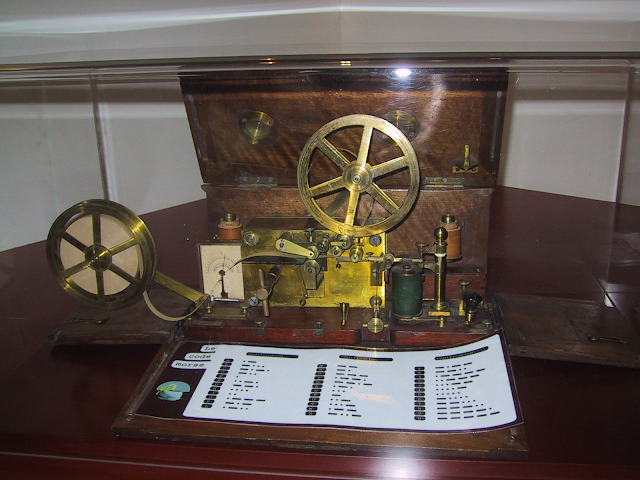The Internet Archive’s Wayback Machine is an incredible tool that many people, including me, rely on to explore past website content.
The archive, which has been storing data from 1996 to the present, is used by researchers, journalists, educators, and anyone curious about early website content.
Recently, while talking with my youngest son, Andrew, we reminisced about his time participating on the St. Cloud Technical College robotics team during the Feb. 9 and 10, 2008, Midwest Robotics Competition in Sears Court at the Mall of America.
Students honed their programming and robotics skills by designing, building, testing, repairing, and operating radio-controlled “battlebots” for arena competitions.
During the Midwest Robotics championship, two 15-pound radio-controlled motorized battlebots, “Humdinger 2” and “Chucker,” with aluminum frames and titanium hulls, competed.
The battlebots chased, circled, and repeatedly slammed into each other at high speeds within the specially constructed polycarbonate arena, causing showers of white sparks to fly from their titanium exteriors.
The championship match ended with the judges declaring Humdinger 2 the winner when Chucker stopped operating due to a broken drive belt.
After graduating from St. Cloud Technical College, Andrew served as a judge for the robotic battlebot competitions at the Mall of America for two years.
I attended that 2008 competition and also interviewed Deb Holmes, the director of the Midwest Robotics League, for a future column.
Unfortunately, after 16 years, that column is no longer archived on the newspaper’s website.
The Internet Archive, home of the Wayback Machine, is an online repository of internet and web content.
Brewster Kahle and Bruce Gilliat co-founded it in 1996 as a digital “library of everything.”
They employed automated web crawlers to archive web pages, capturing snapshots at precise times, which are timestamped.
The Wayback Machine reflects past efforts to store and organize human knowledge.
In the early 20th century, Belgians Paul Otlet and Henri La Fontaine conceived a “world center of knowledge” in Brussels, which they called the Mundaneum.
The Mundaneum was a central repository for gathering and categorizing the world’s information, making it available to all.
Despite the loss of a sizable portion of the Mundaneum’s physical collection during World War II, its legacy lives on through the Wayback Machine’s efforts to preserve information digitally online.
The Wayback Machine has digitally archived 866 billion web pages, continuing the spirit of the Mundaneum by providing freely available online access to information.
The web has existed for just more than 31 years, and many early websites and webpage links have disappeared due to what is known as “digital decay” and “link rot.”
Many of us have encountered a “404 error,” meaning the requested webpage cannot be found due to reasons like content deletion, website closure, changes in the webpage’s address, or temporary technical issues.
A recent study by Pew Research found that 38% of web pages since 2013 are now unavailable.
Broken links are present on 23% of news web pages and 21% of government website pages.
Moreover, 54% of Wikipedia pages have at least one broken link in their “References” section.
Fortunately, the Wayback Machine archives content from many past websites.
The Internet Archive’s Wayback Machine gets its name from the WABAC (Wavelength Acceleration Bidirectional Asynchronous Controller) machine featured in “Peabody’s Improbable History,” a segment from the animated cartoon series “Rocky and Bullwinkle Show” (1959 to 1964).
In the cartoon, Mr. Peabody, a brilliant beagle, and his young human companion, Sherman, travel through time using the WABAC machine.
Although the WABAC is a fictional invention, its design was inspired by early commercial computers of the 1950s, such as the Remington Rand Universal Automatic Computer (UNIVAC I).
Beyond archiving web pages, today’s Wayback Machine digitally houses books, music, films, videos, images, artwork, media news broadcasts, and television programs. It also stores vintage software and games.
In 2007, I obtained a VHS tape of a 1971 Eugene McCarthy speech at Mankato State College.
The speech featured a CBS News interview by reporter Jeff Williams with a student named Tom Ollig.
I uploaded this video to the Internet Archive, where it remains today.
The Wayback Machine includes early websites like Napster, Microsoft, Apple, CNN, MTV, Geocities, Netscape, and Friendster.
Within the Wayback Machine, one can interact with earlier website designs and many of their working hyperlinks.
The Wayback Machine has preserved more than 66,453 web pages from the Herald-Journal website, dating back to Dec. 22, 1997.
To access archived web pages from the Internet Archive Wayback Machine, go to archive.org/web and enter the website name in the search bar. Then click “browse history” to choose the date and time stamp of the archived website you want to view.
A calendar view of the website’s history displays the dates on which web crawler snapshots were captured.
It is important to note that not all websites are archived, and the dates of snapshots will vary.
Click a date and timestamp to view the page as it appeared at that moment in time. The controls at the top allow you to navigate through different snapshots.
The “Robotics League competes at Mall of America” column from Feb. 18, 2008, can be read at tinyurl.com/robotics2008 via the Wayback Machine.
As of January of this year, the Wayback Machine is reported to have archived over 99,000 terabytes of data and continues to grow.
Discover a treasure trove of digital nostalgia by visiting the Wayback Machine and Internet Archive.
 |
| Neil Stocker, Jeff Hallerman, Ted Xu (who is holding one of the robots), Andrew Ollig, and Rocky Hunter 2008 Midwest Robotics Competition at the Mall of America. |
 |
| Feb. 9, 2008 Midwest Robotics Competition at the Mall of America. |




